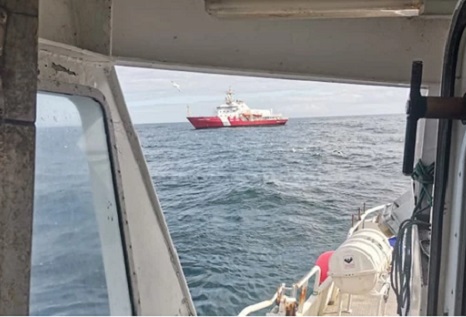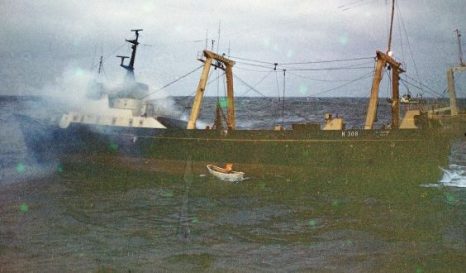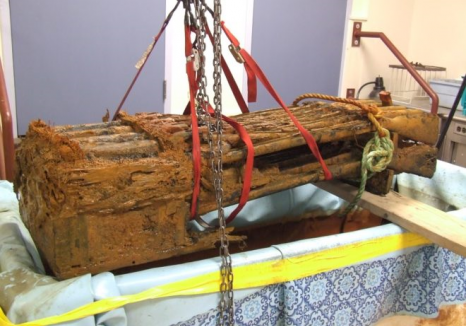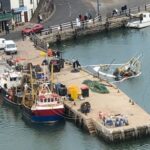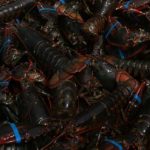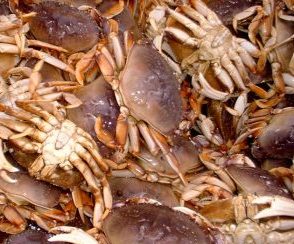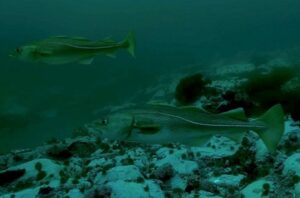Tag Archives: Grand Banks
Climate change makes winners and losers out of cod and snow crab, says scientist
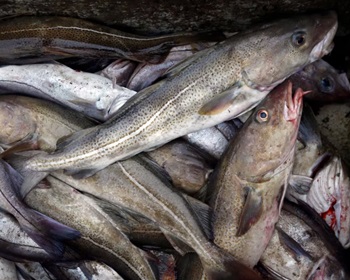 A team of scientists used modelling to look into the effects of climate change on three Grand Banks fish species. They anticipate that warmer waters could lead to biomass declines for snow crab and yellowtail flounder but gains for Atlantic cod. “That’s one thing that we see when we’re looking at the impacts of climate change on marine ecosystems and oceans, is that there are winners and losers. So it’s not as though everything is going to be negatively impacted,” said Tyler Eddy, a scientist with Marine Institute’s Centre for Fisheries Ecosystems Research. Species that thrive or struggle in these scenarios will depend on their thermal preferences and changes in a region, he said, adding a specific species might also leave a region to follow their preferred temperature. more, >>CLICK TO READ<< 10:06
A team of scientists used modelling to look into the effects of climate change on three Grand Banks fish species. They anticipate that warmer waters could lead to biomass declines for snow crab and yellowtail flounder but gains for Atlantic cod. “That’s one thing that we see when we’re looking at the impacts of climate change on marine ecosystems and oceans, is that there are winners and losers. So it’s not as though everything is going to be negatively impacted,” said Tyler Eddy, a scientist with Marine Institute’s Centre for Fisheries Ecosystems Research. Species that thrive or struggle in these scenarios will depend on their thermal preferences and changes in a region, he said, adding a specific species might also leave a region to follow their preferred temperature. more, >>CLICK TO READ<< 10:06
Lifelong Commercial Fisherman Loyd Alan “Lanny” Reposa has passed away in Maine
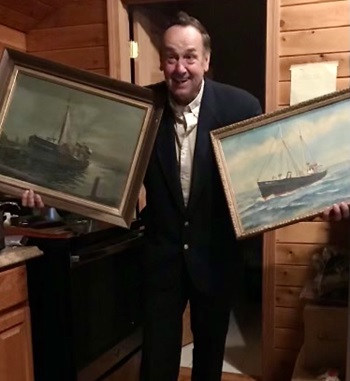 Loyd Alan “Lanny” Reposa, 75, passed away on October 6th, 2024 peacefully at his farm in Maine joining his heavenly family. Born in Wakefield, RI, he was the son of the late Arthur Reposa and Claire Binns, stepson of the late Ruth A Reposa. He was the loving husband of the late Sally Reposa. Lanny was a lifelong resident of South County and commercial fisherman in Point Judith, RI where he owned and operated several boats of the Point Judith fleet. He also fished in Alaska even getting the chance to pass the Titanic discovery and was one of the first captains to introduce freezer fishing to the industry. He embarked to the Grand Banks for a lot of his fishing, remarkably under some of the most brutal and treacherously dangerous conditions (including hurricane Gloria), Lanny always got his vessel and crew back to a safe port without ever losing a crew member. more, >>CLICK TO READ<< 09:14
Loyd Alan “Lanny” Reposa, 75, passed away on October 6th, 2024 peacefully at his farm in Maine joining his heavenly family. Born in Wakefield, RI, he was the son of the late Arthur Reposa and Claire Binns, stepson of the late Ruth A Reposa. He was the loving husband of the late Sally Reposa. Lanny was a lifelong resident of South County and commercial fisherman in Point Judith, RI where he owned and operated several boats of the Point Judith fleet. He also fished in Alaska even getting the chance to pass the Titanic discovery and was one of the first captains to introduce freezer fishing to the industry. He embarked to the Grand Banks for a lot of his fishing, remarkably under some of the most brutal and treacherously dangerous conditions (including hurricane Gloria), Lanny always got his vessel and crew back to a safe port without ever losing a crew member. more, >>CLICK TO READ<< 09:14

How Grand Bank made the ‘Grandy dory’ a Newfoundland icon
During the late 1800s and all of the 1900s, the small boat of choice along the south and southwest coasts of Newfoundland and Labrador was the dory.,, Simeon Lowell of Salisbury Point, Mass., is credited with inventing the dory in 1793. Over the ensuing decades these small, shallow draft, flat bottom boats measuring five to seven metres long, became so popular and were in such demand for fishing along the eastern seaboard that eventually “dory factories,” where they were mass-produced, were established. Around the same time schooners from Nova Scotia also took advantage of the lucrative fishing on our offshore banks followed by our own fishermen in 1891, led by Samuel Harris and at least 16 other schooner owners from Grand Bank. photos >click to read< 11:28

From Doryman to Trawlerman: Maurice Kearley reflects on “the days of wooden ships and iron men.”
He started cod fishing with his father at age eight and then lobster fishing with his brother, Art, at age 12, when he earned enough money to buy his first suit of clothes. Maurice Kearley was 16 when he first went fishing on the Grand Banks in 1944,,, During the next 36 years, until he retired from the sea to work on land at age 52, he fished on vessels that evolved from the wooden schooners to steel-side trawlers and then to steel-stern trawlers. At 16, he signed on as a doryman, onboard the 12-dory schooner Tweedsmuir, owned by the Warehams of Harbour Buffett, with his father, Thomas, as  his dorymate. He spent nine years as a doryman,,, The late 1940s and early 1950s saw a major shift in the offshore fishery with the building of fresh-fish filleting plants around the island, ushering in the end of the schooner salt-fishery and the arrival of steel side-trawlers.,, The introduction of stern trawlers in the mid-1960s was a real game-changer for the men who had previously manned the smaller side trawlers in the 1940s and ’50s. >click to read< 08:42
his dorymate. He spent nine years as a doryman,,, The late 1940s and early 1950s saw a major shift in the offshore fishery with the building of fresh-fish filleting plants around the island, ushering in the end of the schooner salt-fishery and the arrival of steel side-trawlers.,, The introduction of stern trawlers in the mid-1960s was a real game-changer for the men who had previously manned the smaller side trawlers in the 1940s and ’50s. >click to read< 08:42
One of the last great Gloucester schooners: The L.A. Dunton of Grand Bank celebrates 100 years – One of the last great Gloucester schooners: The L.A. Dunton of Grand Bank celebrates 100 years – She was a 10-dory schooner, with two men to a dory while fishing a crew of 22 men, including captain and cook, who lived in very cramped quarters. >click to read<
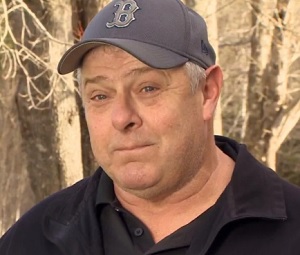
Would throwing the big ones back keep Atlantic halibut fishery on a roll? DFO considers changing the rules!
The investigation is being undertaken at the request of companies that fish halibut using hook and line from the Grand Banks off Newfoundland to Georges Bank off southern Nova Scotia. They’d like to see it happen. “Releasing large halibut is something that fishermen will say, and I will say, that’s just logical, because the majority of the large halibut are females. But you really don’t know just what goes on after you release a large halibut like that,” said Gary Dedrick, a halibut fisherman from Shelburne, N.S., and a founding member of the Atlantic Halibut Council. “So this is where there is monitoring on the bottom and how long they live.” >click to read< 09:45

Fisheries union presents giant novelty cheque for $1 billion to C-NLOPB
Days before a C-NLOPB call for bids closes, Newfoundland and Labrador’s largest fisheries union made what president Keith Sullivan called a “last-ditch effort” to stop the process. Sullivan, who leads the Fish Food and Allied Workers, presented an oversized cheque for $1 billion Monday morning at the headquarters of the Canada-Newfoundland and Labrador Offshore Petroleum Board, made out to the board. >click to read< 13:38
FFAW publicity stunt – The Federation of Independent Sea Harvesters of Newfoundland and Labrador (FISH-NL) calls the FFAW-Unifor’s submission of a land bid this morning to protect crab grounds a publicity stunt to deflect attention from the final days of FISH-NL’s membership drive. >click to read<
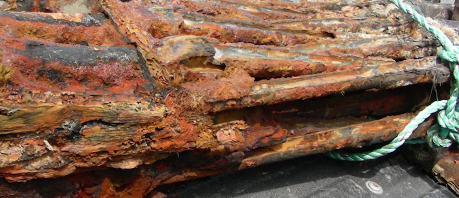
Fishermen Discover Crate Of 19th Century Rifles Off The Coast Of Canada
In 2011, fishermen working off Newfoundland’s Grand Banks pulled in a 600 pound catch. However, what they caught was not a fish. What they discovered was a heavily cemented and silt-filled crate of 20 Pattern 1853 Enfield muskets that date back as far as the 1850’s. The guns had been underwater at the bottom of the Atlantic Ocean for more than 150 years. The archaeology department at Memorial University in St. John’s Newfoundland has been working ever since to restore the relics that have been placed in a large container filled with a chemical solution that includes a bulking agent and corrosion inhibitor designed to stabilize them. After years of conservation work, things are looking good for the restoration process. The “3-band Enfield” got its name as it could get shots out to 500 yards if shot by a skilled marksman and the barrel was held to the wooden stock by three metal bands. Read the story here 16:26
Warming trend continues in waters off Atlantic Canada
 Warmer ocean temperatures off Atlantic Canada continued in 2016, maintaining a trend that started earlier this decade, according to survey results from Canada’s Department of Fisheries and Oceans. On the Scotian Shelf off Nova Scotia, temperatures last year were as high as three degrees above the 30-year average used to establish climatic norms. “It’s not quite the same [record] level of 2012, but it’s getting close to it,” said Dave Hebert, a research scientist with DFO. He added that 2016 was probably the second warmest year on record. Scientists have struggled to explain what is causing the most intriguing aspect of the recent trend: the warming of ocean bottom water, which is not influenced by surface weather events. Hebert said the latest theory is based on model results that see the Gulf Stream moving northward and intersecting with the tail of the Grand Banks. “That is stopping the cold Labrador Sea water from coming around the tail of the Grand Banks,” he said. “That’s where we normally get the cold water that refreshes the [Scotian] Shelf. That hasn’t been happening. Read the story here 16:48
Warmer ocean temperatures off Atlantic Canada continued in 2016, maintaining a trend that started earlier this decade, according to survey results from Canada’s Department of Fisheries and Oceans. On the Scotian Shelf off Nova Scotia, temperatures last year were as high as three degrees above the 30-year average used to establish climatic norms. “It’s not quite the same [record] level of 2012, but it’s getting close to it,” said Dave Hebert, a research scientist with DFO. He added that 2016 was probably the second warmest year on record. Scientists have struggled to explain what is causing the most intriguing aspect of the recent trend: the warming of ocean bottom water, which is not influenced by surface weather events. Hebert said the latest theory is based on model results that see the Gulf Stream moving northward and intersecting with the tail of the Grand Banks. “That is stopping the cold Labrador Sea water from coming around the tail of the Grand Banks,” he said. “That’s where we normally get the cold water that refreshes the [Scotian] Shelf. That hasn’t been happening. Read the story here 16:48
Is John Risely out to gut Ocean Choice International like a fish? By Ryan Cleary
 Nova Scotian John Risley who led a hostile takeover of Fishery Products International in 2001 that led to the company’s demise and the loss of hundreds of rural jobs — appears to be attempting another such takeover. This time of Newfoundland and Labrador-based Ocean Choice International — which bills itself as Canada’s “largest wild fish quota holder,” including highly lucrative snow crab, shrimp, scallops, cod, and turbot. If Risley succeeds he could potentially do to OCI what he did to FPI — gut it like a fish. I say that Risley is no friend of Newfoundland and Labrador, and if he gets his hands on OCI’s quotas the Grand Banks will be sold off to the highest bidder.Ryan Cleary is a former Newfoundland and Labrador MP, long-time journalist, and leader of FISH-NL, a group attempting to represent the province’s fish harvesters in a break-away union from the FFAW. Read the full piece, click here 22:21
Nova Scotian John Risley who led a hostile takeover of Fishery Products International in 2001 that led to the company’s demise and the loss of hundreds of rural jobs — appears to be attempting another such takeover. This time of Newfoundland and Labrador-based Ocean Choice International — which bills itself as Canada’s “largest wild fish quota holder,” including highly lucrative snow crab, shrimp, scallops, cod, and turbot. If Risley succeeds he could potentially do to OCI what he did to FPI — gut it like a fish. I say that Risley is no friend of Newfoundland and Labrador, and if he gets his hands on OCI’s quotas the Grand Banks will be sold off to the highest bidder.Ryan Cleary is a former Newfoundland and Labrador MP, long-time journalist, and leader of FISH-NL, a group attempting to represent the province’s fish harvesters in a break-away union from the FFAW. Read the full piece, click here 22:21
Report suggests snow crab in decline
 Jamie Rose hopes the numbers are as wrong as he thinks they are. That was the St. Anthony fisherman’s reaction to a snow crab report that was recently released by the Canadian Science Advisory Secretariat. The annual report examined fishing areas 2HJ3KLNOP4R and it paints a bleak future for the upcoming season. The index-based report suggests exploitable biomass – large male crab – has declined to its lowest observed level in the last two decades of study, dropping from a highpoint of nearly 70 in the mid-‘90s to a all time low of around 10. Recruitment appears to have bottomed out. The index level is sitting around three points, which dropped from around 15 over the last five years. Read the rest here 11:26
Jamie Rose hopes the numbers are as wrong as he thinks they are. That was the St. Anthony fisherman’s reaction to a snow crab report that was recently released by the Canadian Science Advisory Secretariat. The annual report examined fishing areas 2HJ3KLNOP4R and it paints a bleak future for the upcoming season. The index-based report suggests exploitable biomass – large male crab – has declined to its lowest observed level in the last two decades of study, dropping from a highpoint of nearly 70 in the mid-‘90s to a all time low of around 10. Recruitment appears to have bottomed out. The index level is sitting around three points, which dropped from around 15 over the last five years. Read the rest here 11:26
Canadian F/V White Diamond heading to the Grand Banks for three months of Crab Fishing
 Captain David McIsaac, from Richmond, is taking the 65-foot White Diamond crab boat to the tail of the Grand Banks with five crewmembers and a monitor from the Department of Fisheries and Oceans. “The P.E.I. quota was small, so it was either go big or retire, so I decided to go big,” he explained. It was hard to make a living on a 20,000-pound quota. The quota for the Grand Banks is 750,000 pounds. Read the rest here 13:17
Captain David McIsaac, from Richmond, is taking the 65-foot White Diamond crab boat to the tail of the Grand Banks with five crewmembers and a monitor from the Department of Fisheries and Oceans. “The P.E.I. quota was small, so it was either go big or retire, so I decided to go big,” he explained. It was hard to make a living on a 20,000-pound quota. The quota for the Grand Banks is 750,000 pounds. Read the rest here 13:17






